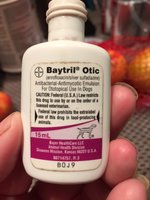- Thread starter
- #11
Rainieb
Songster
Thank you! There is no redness and swelling only little circular black scabs. Maybe I will try Baytril. Does it get rid of the infection?IMHO based on exp, dont cut into those feet unless you see extremely obvious redness and swelling.
I've had luck with applying Baytril Otic (prescription) for dogs' ears to the black scabs.









 Loving the shoes!!
Loving the shoes!!